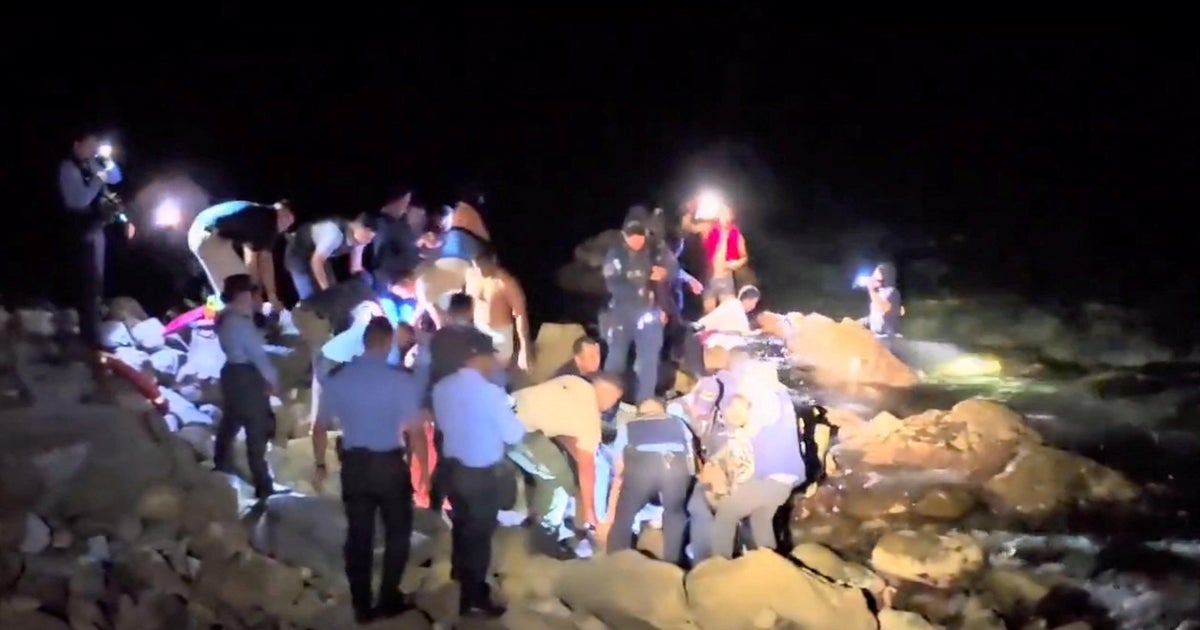A ROWER was rescued by a warship after being battered by a cyclone on the final leg of a mammoth journey across the Pacific Ocean.
Aurimas Mockus from Lithuania had been rowing alone for 136 days from San Diego to Brisbane and was less than a week from the finish line when he had to be rescued.
He would have been the fourth person ever to complete the solo non-stop crossing and was on track to be the fastest.
But, as Queensland braces to be battered by Tropical Cyclone Alfred, Aurimas found himself caught in the middle of raging waves in the Coral Sea, about 460 miles off the coast of Mackay.
The 44-year-old whose enclosed boat was being thrown around by raging 22ft waves while being battered by 50mph winds launched his emergency beacon on Friday.
HMAS Choules, a 16,000 tonne Australian warship responded to the call and hauled Aurimas and some of his belongings on board on Monday, leaving his boat to the mercy of the sea.
The Australian Maritime Safety Authority, which facilitated the rescue, said on Facebook: "At about 10 pm AEDT on Friday, we received an emergency beacon alert from their vessel, located about 740 km east of Mackay, QLD.
"Conditions in the area were severe due to Tropical Cyclone Alfred.
"We tasked two of our Challenger search and rescue aircraft, established initial communications with the rower, and worked with the @AustralianDefenceForce and the Royal Australian Navy HMAS Choules L100, which reached and rescued the rower this morning.
"Thank you to all involved for your invaluable assistance with this rescue.
"This successful outcome highlights the importance of carrying an emergency beacon at all times, as this led to a prompt response to this emergency."
The AMSA added: "Because of highly unfavourable sea conditions, Mr Mockus’s boat could not be recovered except for two oars and some personal items."
Horror as two climbers swept 160ft down Scots mountain after AVALANCHE hits
Footage posted of the nighttime rescue showed the row boat being thrown around in the waves as a team on the warship's Rigid-Hulled Inflatable Boat brought him to safety.
The rescuers who were on a smaller vessel deployed by HMAS Choules were also rocked and buffeted by the rough waves, at one point being pitched up into the air before crashing onto a wave.
The group were eventually brought to safety after being hauled up to the deck of the warship on a winch.
Vice Admiral Justin Jones said that Aurimas was taken on board where he underwent a medical assessment.
No further details about his condition have been released but he told rescuers he was "fatigued" when he made initial radio contact with a plane sent by the AMSA.
The Cairns-based Challenger jet, unable to find the rower in the torrential weather, was able to make radio contact to learn of Aurimas' condition.
Aurimas had set sail from San Diego in October to embark on the 7,500 mile solo voyage to Brisbane.
When he was rescued, he was just days away from completing the mammoth adventure.
He is being taken to Sydney in New South Wales by the military ship as the cyclone continues to threaten the east coast.
EMERGENCY PREPARATIONS
It is set to make landfall later this week with Queenslanders warned to prepare for severe conditions which has seen shelves cleared of food and beaches closed off as locals batten down the hatches.
On Monday officials said the cyclone is expected to intensify to a category two storm before moving towards the south-east of Queensland.
The state government said: "The Bureau of Meteorology (BOM) advises Tropical Cyclone Alfred has strengthened to category 2.
"The tropical cyclone could cross the coast of southeast Queensland from Wednesday.
"Conditions will worsen as it gets closer to land. Conditions are still changing and you need to prepare now."
A Category 2 cyclone warns of destructive 100-mile-per-hour winds and the risk of flash flooding, which could prove fatal.
BOM senior meteorologist Sarah Scully said that up to 400mm of rainfall is expected as well as "big storm tides."
Queensland Premier David Crisafulli warned those living in island and bay communities to consider if they are going to leave or stay as the evacuation window is set to close soon.




















 English (US) ·
English (US) ·